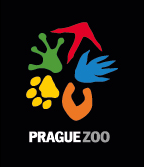Saving the Przewalski’s horses
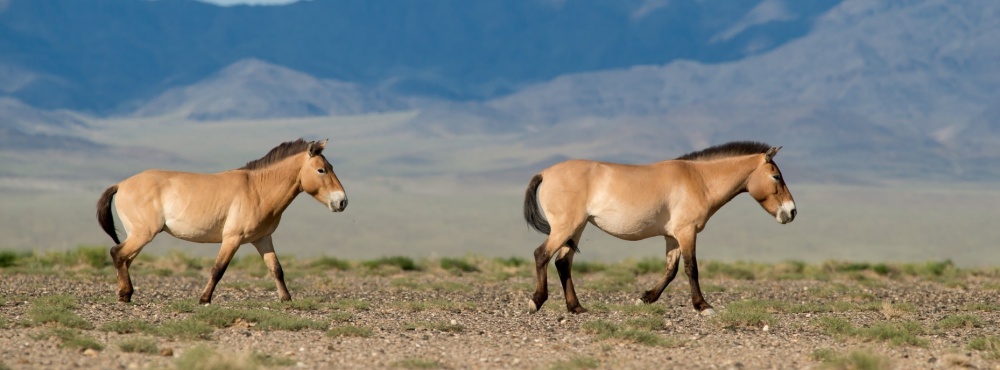
Decades ago, the Przewalski’s horse got extinct in the wild. It has been, however, preserved under human care, and an extraordinary credit for this goes to Prague Zoo, whose breeding programme for these rare horses began in 1932.
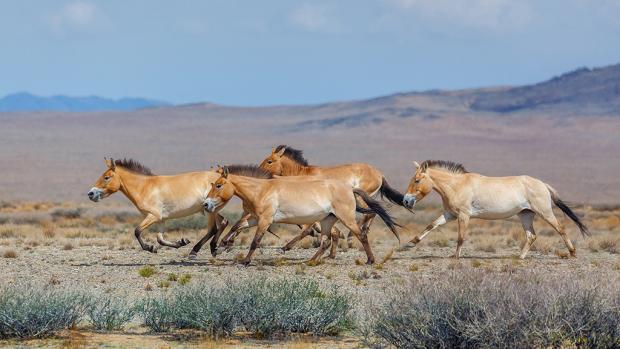 Wild-living Przewalski’s horses in the Great Gobi B Strictly Protected Area. Photo: Miroslav Bobek, Prague Zoo
Wild-living Przewalski’s horses in the Great Gobi B Strictly Protected Area. Photo: Miroslav Bobek, Prague Zoo
Even at the time of its discovery in the second half of the 19th century, the Przewalski’s horse had already been relatively scarce in its native range. Its decline was likely driven by hunting and competition with domestic livestock for grazing and water sources. Additional factors included hybridisation with domestic horses, habitat disturbance caused by mining, and armed conflicts.
Very little is known about the historical development of its wild populations, not least because no scientific studies were carried out until 1947, when a few small groups were observed. As late as 1967, a harem group was reported, but just two years later, only a single stallion was recorded—he was the last Przewalski’s horse ever seen in the wild. The species’ future came to depend entirely on breeding in human care.
|
Threats to the Przewalski’s Horse 1. Historical threats leading to extinction in the wild: 2. Potential threats to reintroduced populations: 3. Natural risks: |
Breeding in human care and return to the wild
By 1902, a total of fifty-four Przewalski’s horses had been brought into zoos—but only twelve of them produced offspring. In 1946, one more mare was successfully captured in Mongolia. This means that the entire global population of Przewalski’s horses today descends from just thirteen individuals.
Prague Zoo, whose breeding lineage of the Przewalski’s horse has existed for over a century, has played a key role in preserving the species. The first three Przewalski’s horses arrived in Czechoslovakia in 1921, and just a year after Prague Zoo opened, two of them (a stallion and a mare) were transferred to its grounds. In 1933, they became parents of the zoo’s first foal. Over the following 90 years, more than 250 Przewalski’s foals were born at Prague Zoo, and not even the Second World War interrupted the breeding programme.
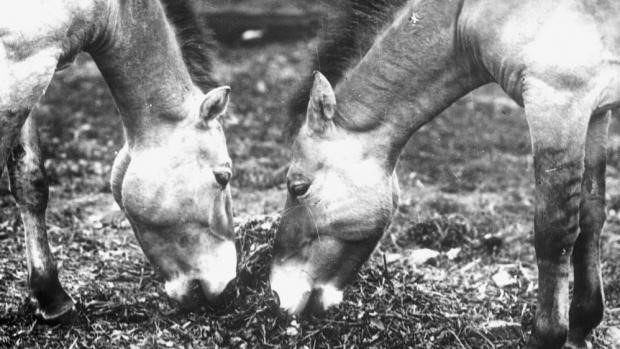
Ali and Minka—the first breeding pair of Przewalski’s horses living in Prague Zoo (1930s). Photo: Prague Zoo archive
In 1959, Prague Zoo hosted the very first international symposium on the conservation of the Przewalski’s horse. One of its key outcomes was the establishment of the International Studbook, which Prague Zoo has maintained ever since (the first edition was published in 1960).
Thanks to the growing number of horses in human care, it eventually became possible to begin reintroducing them to their native homeland. Prague Zoo joined the effort in 1998 and 2000, when it provided four Przewalski’s horses for international transports to Takhiin Tal in the Dzungarian Gobi in Mongolia and to Khustain Nuruu in the Mongol Daguur Steppe. At the time, these reintroduction initiatives were led primarily by Dutch, German, and Swiss organisations.
A long pause followed, during which international horse transports almost ceased. It seemed that the species was already on the road to recovery—and, consequently, the motivation to embark on such a demanding enterprise had vanished. However, the harsh realities of life in the steppes and semi-deserts of Central Asia have since proved that the fight was not over yet.
Prague Zoo’s initiative
A major turning point for the further development of Prague Zoo’s in situ conservation efforts for the Przewalski’s horse came in 2010, when a harsh winter in the Great Gobi B region of western Mongolia caused the local population to crash to roughly one third of its previous size. In response—and with international transports having petered out—Prague Zoo resolved to take on the organisation of transports on its own, becoming the first zoological garden in the world to do so. Until then, all such operations had been carried out exclusively by private foundations or non-governmental organisations. Thus, the Return of the Wild Horses project was born.
Today, the global population of Przewalski’s horses numbers around 2,000 individuals in human care, with several hundred more in protected areas across Mongolia, China, Russia, and Kazakhstan, where they have been reintroduced. In recognition of these efforts, the Przewalski’s horse was downlisted on the IUCN Red List in 2008 from “Extinct in the Wild” (EW) to “Critically Endangered” (CR), and again in 2011 to the category “Endangered” (EN).
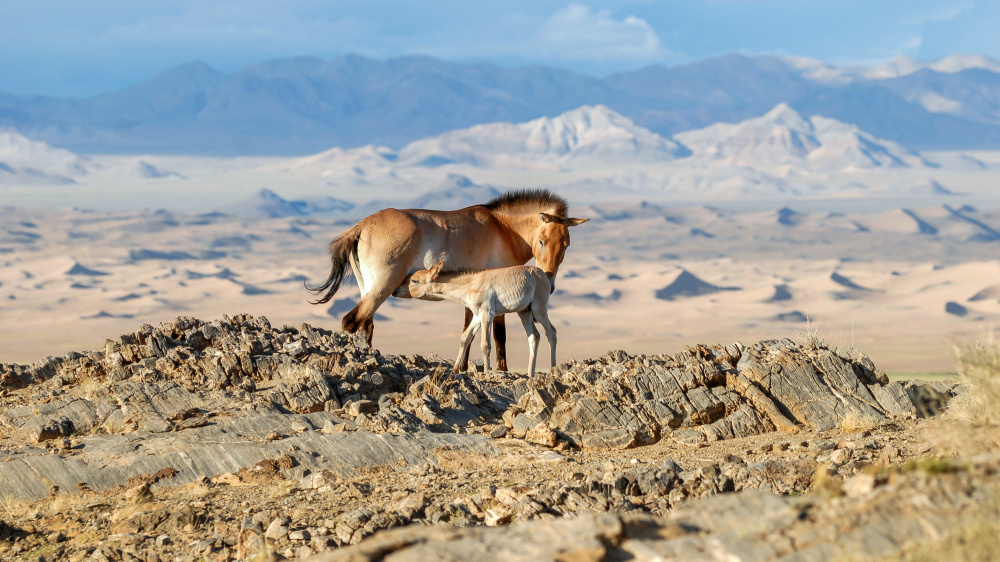
Cassovia, one of the mares released by Prague Zoo in Mongolia’s Khomyn Tal in 2011, with her foal. Photo: Evžen Kůs, Prague Zoo
ZOOPRAHA.CZ
Contacts
- The Prague zoological garden
U Trojskeho zamku 120/3
171 00 Praha 7
Phone.: (+420) 296 112 230 (public relations department)
e-mail: zoopraha@zoopraha.cz
Others
